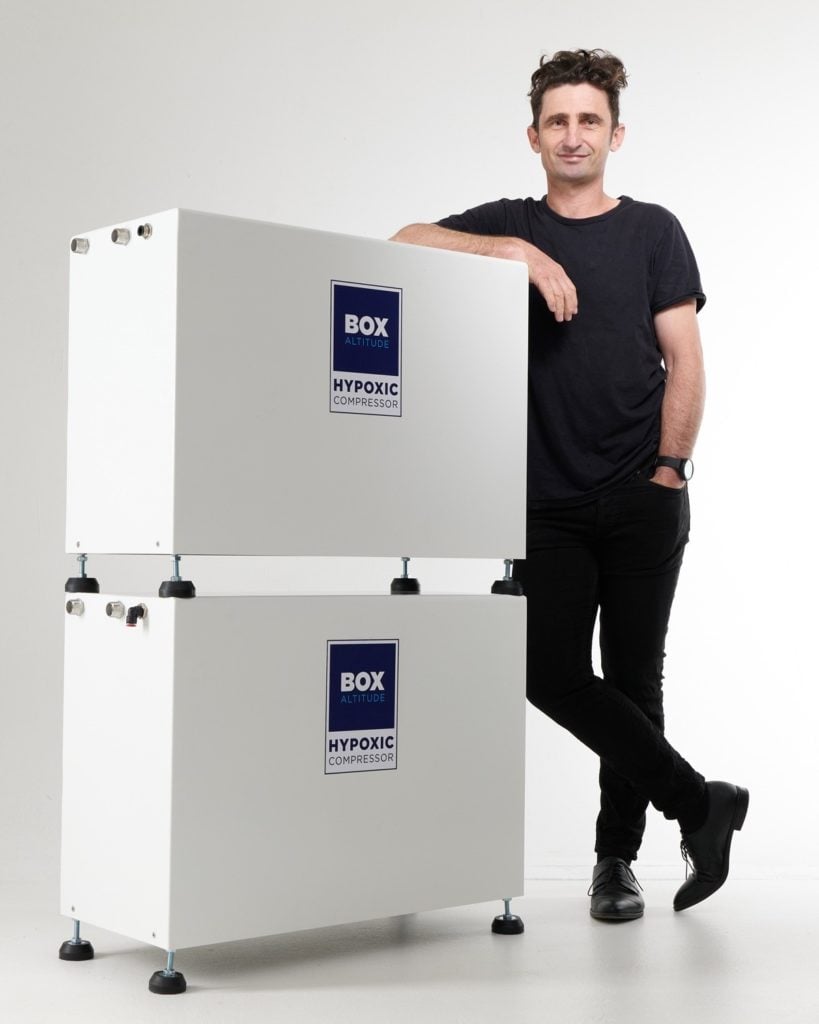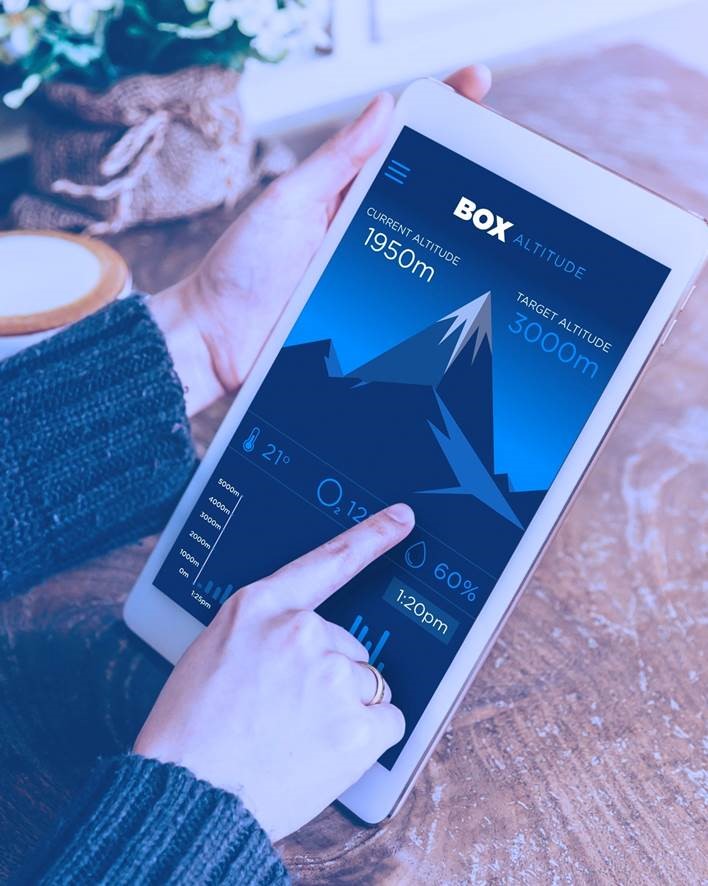
Box Altitude Employs Garmin Pulse Ox Technology to Demonstrate the Fitness Benefits of Altitude Training
Whether you’re an athlete looking for a competitive edge or just someone looking to boost your fitness, being at higher altitudes has its advantages. However, training or living at higher altitudes is not something many people can do regularly or easily, which is where Box Altitude comes in. By using a product from the Australian company Box Altitude, users can simulate high altitude conditions and monitor their body’s response using the Pulse Ox feature available on some Garmin wearables.¹

Convenient and Comfy at High Altitudes
After recognising physical gains while living and training in the French Alps, Box Altitude’s founder Rico Rogers began researching the benefits of living at higher altitudes. He used his findings to design and create simulation equipment that surpasses existing technology in terms of comfort, noise, functionality and efficiency. In order to quantify and control the altitude experience, Rico also developed an app and sensor, placing Box Altitude at the forefront of altitude technology. By collaborating with Garmin and by integrating the Health API, the Box Altitude is able to gauge how customers acclimate and benefit from high altitude conditions.
Pulse Ox
When you sleep in a high-altitude environment, your body’s oxygen levels drop and trigger the body to manufacture more efficient blood cells which, in turn, increases oxygen absorption. The Pulse Ox feature available on some Garmin devices uses optical sensors to estimate the saturation of oxygen in the bloodstream (SpO2). SpO2 levels can be measured periodically throughout the day and during sleep, depending on the Garmin device.
Vo2 Max
VO2 max is the maximum rate of oxygen consumption measured during incremental exercise. Some Garmin devices estimate VO2 max during certain fitness activities. This feature allows users to gauge and track improvements in their cardiovascular fitness. At the end of a 4- to 6-week block of sleeping at simulated, higher altitudes, Box Altitude aims to see a 4-5% increase in estimated VO2 max during exercise.
Heart Rate
A person’s heart rate tends to increase at higher altitudes, but it should decrease as they acclimate. As such, monitoring heart rate during the use of Box Altitude products can demonstrate how customers are adjusting to the changing conditions. Garmin wearables are designed to monitor heart rate during activity, rest and sleep, giving an estimate of the user’s health and fitness.
Sleep
Box Altitude products range from portable sleep systems to entire room installations. An important factor for Rico Rogers is that users are able to sleep comfortably in the simulated environment. Select Garmin² devices offer an estimated breakdown of light, deep and REM sleep stages, accompanied by Pulse Ox and respiration data, to give users insights about their sleep hygiene.

The Future of High Altitude Training
The opportunities for this kind of environmental simulation technology are vast – elite sports training, military preparation, weight loss, health and fitness – with numerous studies³ demonstrating the varied benefits of altitude training. For Box Altitude, the investigation of blood oxygen levels and the impact of altitude on overall fitness are underpinned by the fast and accurate insights unlocked by Garmin wearable technology.
¹ This is not a medical device and is not intended for use in the diagnosis or monitoring of any medical condition; see Garmin.com/ataccuracy. Pulse Ox not available in all countries.
² Activity tracking accuracy: Sleep tracking available when paired to a compatible smartphone
³ Find an example here or find more studies using Garmin devices on our Garmin Health Third Party Study Overview.




